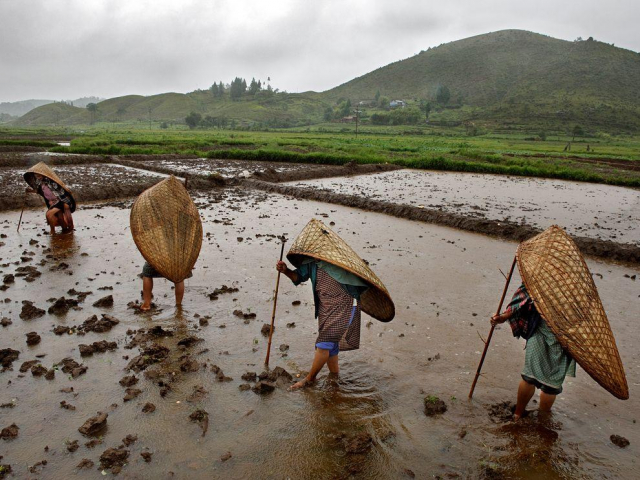
Mawsynram (India)
Experts consider India to be the leader among the rainiest countries in the world. It occupies the first line of the rating by annual precipitation. The palm of superiority among the rainy places in India goes to the small high-mountain village of Mawsynram. According to Guinness World Records, citizens see 11,871 mm of rainfall here in a year. This is enough to almost completely flood five-story buildings. However, travelers love Mawsynram for the mystique of the fog-shrouded streets. The narrow streets of Mawsynram seem to have strange fish swimming through them. However, these are the locals, whose unusual appearance is given by special woven hats. Thanks to these hats, Indians escape from the rain. Typical of Asian countries, a cone-shaped headdress is woven in such a way that it covers the head on one side and the back on the other. In shape, these hats resemble half a pistachio shell.
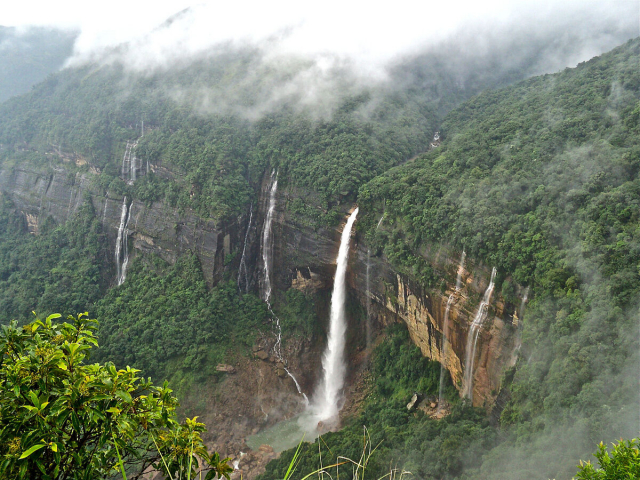
Cherrapunji (India)
Second in this rating is the small Indian city of Cherapunji. It is located 10 km from Mawsynram. According to experts, Cherrapunji receives about 11,777 mm of yearly rainfall. The symbol and main attraction of the city is the unusual invention of the locals are living bridges. This is a calling card for Cherrapunji. The fact is that ordinary bamboo bridges quickly fall into disrepair in a humid climate. As a result, Indians decided to throw the roots of rubber trees over rivers and ravines. The inhabitants first built a bamboo bridge and then put young adventitious roots across it. After these roots reach the opposite bank, they grow into the ground. As a result, these living crossbars form a strong structure. Such a bridge “grows” for about ten years and lasts for many years.
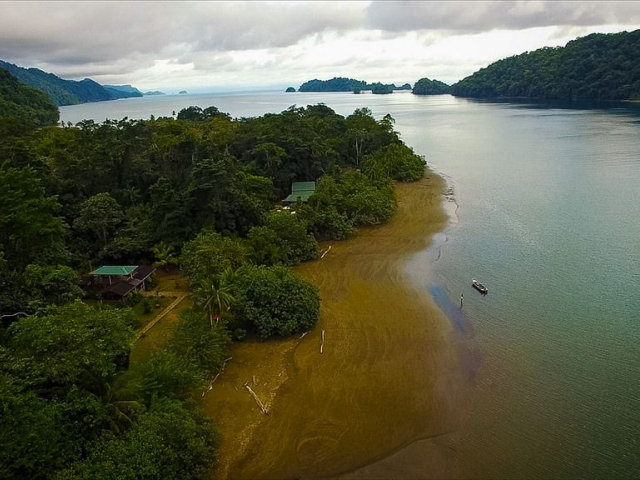
Tutunendo (Colombia)
The third line in the list of the rainiest places goes to the village of Tutunendo, located in western Colombia. It is located in the high-mountainous Choco region. This small village receives about 11,770 mm of rainfall annually. In 1974, Tutunendo recorded an absolute record for our planet - 26,303 mm of rainfall. However, such high humidity and constant rains do not deter tourists. The peculiarity of this region is that the rains mainly come at night, and during the day the weather pleases with its stability. Travelers can walk along the mountains, drowning in greenery, raft on rivers, and swim in waterfalls. The humidity in the region tends to be 100%. Note that the town of Quibdo, located near Tutunendo, is considered the rainiest in the world.
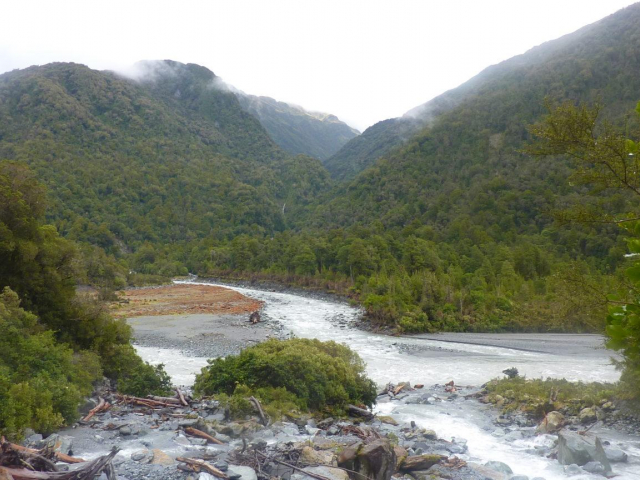
Cropp River (New Zealand)
The next rainiest place on Earth is the Cropp River. It is located in New Zealand, in the highlands of the South Island. The nearest town here is Hokitika, located on the coast, from where you can go to a nine-kilometer section of the Cropp River. This area receives 11,516 mm of rainfall per year. In December 1995, a new record was set in New Zealand: in 48 hours, the amount of rainfall totaled 1,049 mm. However, tourists are not frightened by excessive rain. They are attracted by the incredible beauty of nature, as well as the purest blue water, which is illuminated by white rocks and reflects overhanging trees. The rivers of this region flow through picturesque canyons, where you can take unforgettable walks.
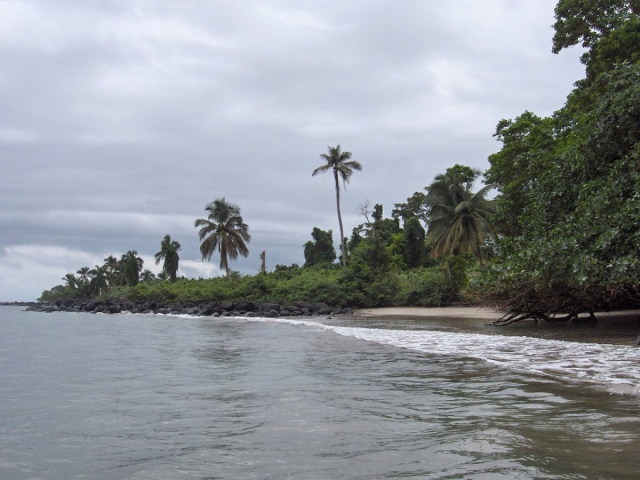
Bioko Island (Equatorial Guinea)
In fifth place is Bioko Island, the wettest place on the African continent. This region is separated from the rest of the land by a wide strait. Bioko Island sees 10,450 mm of rainfall per year. However, tourists are attracted by its rich and varied nature. This small island of volcanic origin is characterized by amazingly beautiful black sand beaches. There are magnificent golden bays with coral reefs, jungles and waterfalls, high rocky cliffs, and a huge lake lurking in the volcano crater.
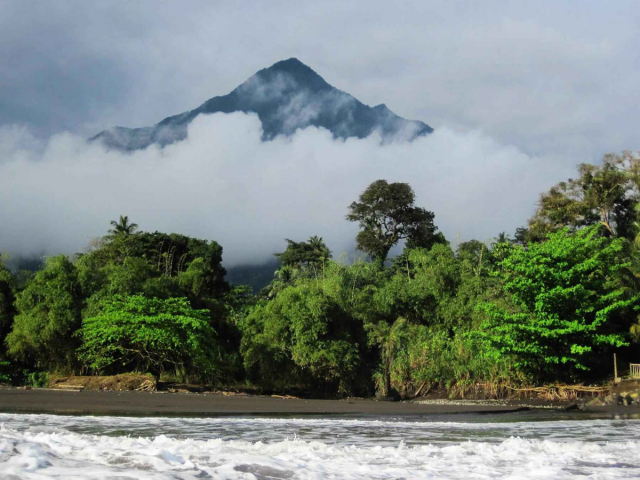
Debundscha (Cameroon)
The village of Debundscha closes the list of the top six rainiest places on the planet. It is located in Cameroon, a territory of Africa. Debundscha village is situated near the equator. It rains here for most of the year, with a rainfall of 10,299 mm. However, the high mountains surrounding the village trap the clouds. A beautiful volcanic lake is spread near Debundscha. Another attraction of the place is the cape of the same name, where there is a lighthouse installed by German colonizers in 1904.
 Deutsch
Deutsch 
 Русский
Русский English
English Bahasa Indonesia
Bahasa Indonesia Bahasa Malay
Bahasa Malay ไทย
ไทย Español
Español Български
Български Français
Français Tiếng Việt
Tiếng Việt 中文
中文 বাংলা
বাংলা हिन्दी
हिन्दी Čeština
Čeština Українська
Українська Română
Română
